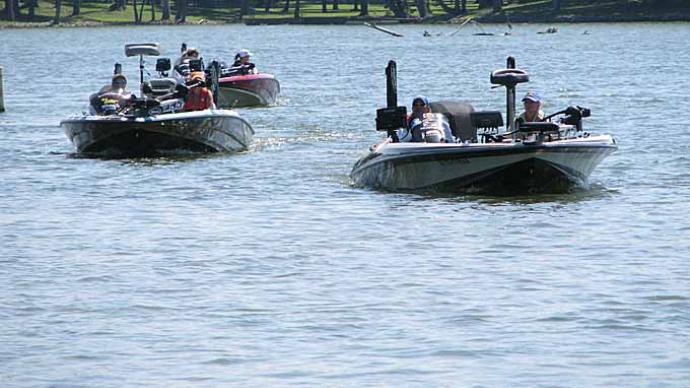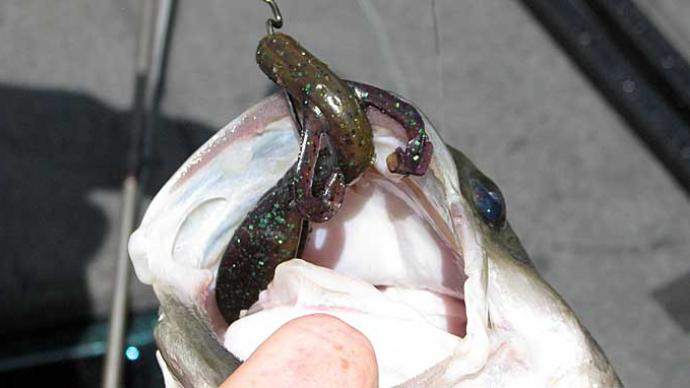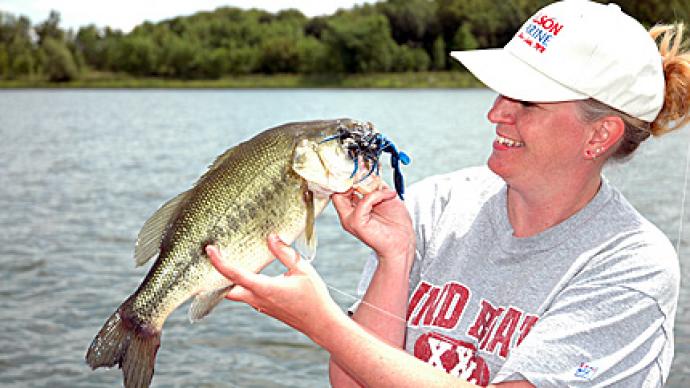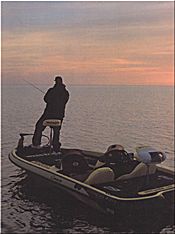
One of the critical characteristics of the nation's top professional bass anglers is years of on-the-water experience. They have fished in all types of water under all kinds of conditions. Through this experience, professional anglers learn how to catch fish using various techniques.
This extensive fishing experience gives professional anglers a distinct tournament advantage over weekend tournament anglers. Most anglers fishing the Wal-Mart BFL realize they need to gain hours of fishing experience before moving up to compete at higher levels.
Yet, when we examine lists of winners from BFL, EverStart, and FLW Tour events, a small but elite group of anglers repeatedly rise to the head of the class. There is something special about these anglers. That something is the ability to make instantaneous adjustments to their fishing tactics.
Recognizing when and how to adjust really separates the good fishermen from the great fishermen, say most professional anglers. When fishing a tournament, things go differently than you plan it. You need to be able to change to meet the situation.
Knowing when to adjust is crucial to winning a tournament. Many of these on-the-water adjustments are in response to climatic changes, such as a passing cold front or a subtle shift in water current. These conditions will alter how bass behave and strike.
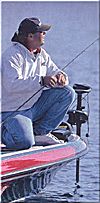
"The key to any on-the-water adjustment is recognizing change," says professional angler Terry Baksay of Monroe, Conn. "This requires you to be very observant. You need to look at what the fish are doing, how the bass relate to structure, and how the weather and water change. Each change forces you to make changes in your fishing patterns."
Experienced anglers can often detect these environmental changes as they occur. Cold weather and wind are apparent changes that most anglers sense, but water current changes and more subtle weather changes will often fool the weekend angler. Baksay relates how he was forced to change his fishing tactics because of a subtle, seemingly insignificant weather change.
"A few years ago on Lake Seminole, I was catching fish on a gold-colored Rogue around some trees. The day was sunny, and the fish were active," he said. "The next day was partly cloudy, and the fish stopped biting. But then the sun came out, and a bass hit the Rogue. After that, I watched the water and cast toward trees when the sun hit them. That was enough for me to take a check."
In multi-day tournaments, anglers often go out at different times each day. One day, an angler will go out on an early flight when the lighting is dim. But another day, the angler will find himself on a later flight when the sun is higher. A common mistake inexperienced anglers make is to fish each starting time identically.
Perhaps you start early in the morning before the sun gets up, and you catch them on poppers and light colors, but the next day, after the sun gets up, you don't catch them. It's not that the fish aren't there. You need to change to catch them.
Follow Ups
Every tournament angler has felt the frustration of watching a bass follow his lure to the boat without biting it. These fish casually swim behind the bait, glance up toward the boat, and then slowly turn away.
The same story fits the tournament-fishing scene. If the little train engine didn't believe it could pull the boxcars up the hill, it probably wouldn't. Likewise, the tournament angler that questions his ability to win the tournament is doomed to failure.
Many inexperienced anglers continue down the bank, casting and hoping one fish will make a run toward the lure. That, unfortunately, doesn't usually happen, so most anglers contently throw up their hands and begin making excuses as to why the bass aren't biting.
What it should tell you is that there are bass in the area. It should tell you there is some aggression because the bass followed the lure. Something about your lure aroused the bass' curiosity. But it also tells you your bait isn't doing its job.
Armed with this knowledge, you can make an educated adjustment to your fishing approach that will entice the bass into striking. You could change spinnerbait blades or crankbait color. That could be enough to trigger a strike. Sometimes a significant shift in approach is in order.
Baksay says he would make two lure adjustments to catch trailing bass. He would either change lure color or lure size. Baksay would first reduce the size of his bait. But in the end, he would eventually catch the bass because if his first change didn't work, he would switch to the other option. He would be casting a different size and color lure within a few dozen casts.
Baksay also alters his standard procedure to meet environmental conditions.
Notice Your Changing Environment
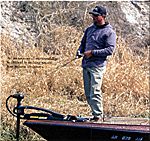
Many on-the-water adjustment decisions are based on non-fishing observations. Water rises and drops should give you an indication of how bass will alter their feeding positions. Current, whether dam or wind-driven, can often push fish into different stations. Your fishing experiences will help you adjust your tactics to match the bass.
But Baksay believes there are more telltale signs to indicate bass activity.
"You must be aware of your surroundings and the conditions at all times," he says. "But you need to watch the activity on the shore, too. Fish are like animals up in the woods. If they are active, the bass will be, too. If not, slow down and use a smaller bait.
"If you see a lot of bait on the surface and all of a sudden the baitfish aren't around, that may indicate that the bass aren't moving around. Then it's time to pick up a jig and go tight to cover," he says.
Sometimes the opposite will happen. In the morning, all is still. You begin the day by flipping the lay downs then, all of a sudden, the baitfish will begin moving about. You need to immediately respond to the change by switching to a lure that matches the bait's activity level.
Making The Move
During practice, you located an area loaded with bass. But as luck would have it, a cold front moved in, and the fish simply refuse to bite. The fish are still in the area. You know it. You feel it.
But what can you do?
Move.
Perhaps the most challenging on-the-water adjustment you can make is leaving an unproductive area to find another one. It takes confidence in your abilities to find fish and confidence in yourself that you are making the right move.
"Many anglers are scared to move," Baksay says. "But you can't be afraid to go practice during a tournament. Some of the biggest stringers I've caught were during tournaments when I was practicing."
Baksay says that when he loses confidence in an area, it is futile for him to continue casting away. In his mind, he knows he can't catch a fish in the spot. When that happens, he will look for new areas that may produce the winning creel.
"You can sit on a dead horse all you want, but you are not going to win the race," he says. "Sometimes you have got to get a new horse."
And sometimes, you need to switch to a new tactic or pattern. In time and with experience, you can learn when and how to make those crucial on-the-water adjustments.
Content provided by Bass Fishing Magazine, the official publication of FLW Outdoors


